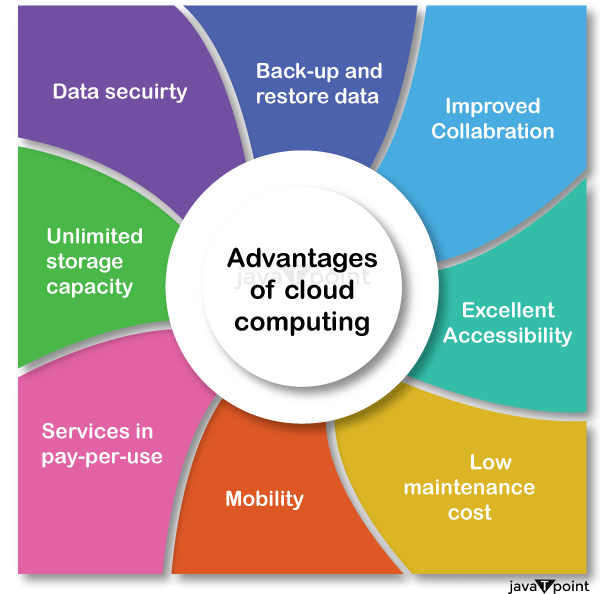Universal Cloud Service: Dependable and Effective Solutions for Your Service
Wiki Article
Achieve Seamless Scalability With Cloud Services
In the ever-evolving landscape of cloud services, attaining seamless scalability stands as a cornerstone for modern services seeking to stay competitive and versatile. The pursuit for seamless scalability with cloud services unveils a globe of possibilities for those eager to welcome the transformative power of dynamic source monitoring.Benefits of Cloud Scalability
Cloud scalability provides companies the adaptability to dynamically change resources based on demand, making sure optimum efficiency and price effectiveness. One essential advantage is the capacity to scale resources up or down quickly in reaction to rising and fall workloads. This agility allows services to fulfill transforming consumer needs without over-provisioning sources, eventually causing set you back financial savings. Scalability likewise enhances performance by making sure that systems can take care of raised web traffic or work without experiencing downtime or slowdowns. By efficiently alloting sources, companies can keep high degrees of performance throughout peak times without unneeded costs throughout quieter periods. In addition, cloud scalability promotes advancement and experimentation by allowing services to easily examine originalities and range them as needed. This flexibility urges a culture of continuous enhancement and adjustment, making it possible for companies to stay competitive in a swiftly progressing market landscape. Inevitably, the advantages of cloud scalability prolong past price savings to include improved efficiency, agility, and technology.Key Attributes for Scaling
Effective scaling in cloud solutions depends on vital attributes that enable organizations to readjust resources dynamically based on need. Another vital function is scalability, allowing systems to take care of boosted work by adding sources flawlessly. Overall, these essential features collectively equip companies to attain smooth scalability in cloud services.Executing Auto-Scaling Techniques
To effectively optimize resource appropriation and adapt to differing work, organizations must tactically implement auto-scaling techniques in their cloud solutions infrastructure. Auto-scaling enables systems to immediately readjust the number of calculate resources based upon real-time demand. There are different auto-scaling strategies that companies can employ, such as anticipating scaling, which utilizes historical information to anticipate future source requirements, and responsive scaling, which reacts to current work changes.
Best Practices for Scalability
For companies aiming to improve their scalability in cloud solutions, carrying out finest methods is critical for ideal performance and resource administration. One key finest method is creating applications with a microservices design. This method breaks down applications into smaller, independent services that can be deployed, upgraded, and scaled independently, permitting better flexibility and scalability.An additional essential technique is utilizing containerization technology, such as Docker or Kubernetes. Containers enable the packaging of applications and their dependencies into separated devices, making it simpler to scale elements individually and release them consistently across various atmospheres.
In addition, carrying out automated release and facilities as code (IaC) can streamline scalability initiatives (linkdaddy cloud services). Automation devices like Terraform or Ansible aid in provisioning and managing resources successfully, reducing manual mistakes and enabling fast scalability
Additionally, keeping track of efficiency metrics, establishing up informs, and conducting routine ability preparation are necessary methods to make certain proactive scalability monitoring. By adhering to these ideal methods, companies can achieve smooth scalability in their cloud solutions while enhancing performance and resource usage.
Tracking Efficiency Metrics
When evaluating the efficiency of cloud services scalability, closely monitoring performance metrics is vital for ensuring optimal capability and resource allotment. By continually tracking key performance indications (KPIs) such as reaction times, throughput, latency, and resource application, companies can gain useful insights into the health and wellness and performance of their cloud framework. Monitoring efficiency metrics permits for the very early discovery of potential traffic jams or issues that might affect scalability, making it possible for positive measures to be required to resolve them before they escalate.

Final Thought
Finally, achieving seamless scalability with cloud services is essential for companies to maximize performance, enhance innovation, and preserve high efficiency degrees throughout peak times. By leveraging the advantages of cloud scalability, carrying out auto-scaling methods, making use of vital functions such as flexibility and automation, and complying with ideal methods like application layout and performance tracking, services can successfully scale their systems while taking full advantage of source application and performance.The quest for smooth scalability with cloud services introduces a globe of opportunities for those eager to embrace the transformative power of dynamic source administration.
Cloud scalability uses companies the adaptability to dynamically readjust sources based on need, guaranteeing optimal efficiency and price effectiveness. An additional essential function is scalability, allowing systems to manage enhanced work by adding resources seamlessly.For organizations aiming to improve their scalability in cloud services, executing best practices is important for optimum performance and source administration.When analyzing the performance of cloud solutions scalability, carefully monitoring efficiency metrics is imperative for ensuring optimum functionality and resource allowance.
Report this wiki page